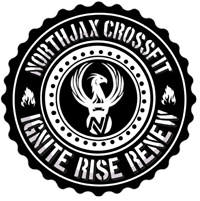
Entering the golden years doesn’t mean slowing down, especially when it comes to maintaining strength, mobility, and overall health. For those over 50, integrating strength training into your fitness regimen is not just beneficial; it’s essential. Applying the principles of tempo manipulation and isometric holds can offer a safer, more effective path to preserving muscle mass, enhancing joint stability, and improving quality of life. Let’s explore how these strategies can be specifically tailored to meet the needs and goals of individuals over 50.
The Wisdom of Tempo Training
As we age, our muscles and joints might not respond to high-impact or rapid movements as they once did. That’s where the magic of tempo training shines, offering a method that emphasizes control and precision, which is crucial for older adults.
Tailored Benefits for Over 50s
- Joint Care and Injury Prevention: The controlled pace of tempo training reduces the risk of injuries by lessening the strain on joints and connective tissues.
- Maintained Muscle Mass: Slower eccentric phases increase muscle time under tension, crucial for combatting age-related muscle loss (sarcopenia).
- Improved Muscle Quality: Focusing on the muscle’s entire range of motion enhances muscle fiber recruitment, leading to improved muscle quality and functionality.
- Enhanced Coordination and Balance: The deliberate movements required in tempo training enhance neuromuscular coordination, contributing to better balance and fall prevention.
The Stability of Holds
Incorporating isometric holds into a strength routine can be particularly advantageous for those over 50, offering a low-impact, high-reward strategy to strengthen muscles and stabilize joints.
Customized Benefits for Older Adults
- Accessible Strength Gains: Isometric exercises can be performed anywhere, without the need for heavy weights, making them ideal for older adults looking to maintain or gain strength.
- Focused Muscle Engagement: Holds can target and strengthen muscles and areas of the body that are crucial for daily activities, enhancing functional fitness and independence.
- Increased Bone Density: Regularly engaging in weight-bearing exercises with holds can contribute to maintaining or even increasing bone density, which is vital for preventing osteoporosis.
- Improved Postural Support: Strengthening core and back muscles through holds can improve posture, alleviate back pain, and enhance overall mobility.
Applying These Strategies
For individuals over 50 looking to integrate tempo and holds into their strength training, consider the following approach:
- Start Slowly: If you’re new to strength training or returning after a break, begin with lighter weights and simpler exercises to build a foundation.
- Emphasize Warm-Up: Properly warming up with dynamic stretches or light cardio can prepare your muscles and joints for exercise, reducing the risk of injury.
- Incorporate Full-Body Workouts: Focus on exercises that target multiple muscle groups, such as squats with an overhead press, to maximize efficiency and functional strength.
- Progress Gradually: Increase the duration of holds and the tempo of your exercises gradually, listening to your body to avoid overexertion.
Example Exercise: The Squat
- Tempo Adjustment: Lower into the squat over a count of 3-5 seconds, hold at the bottom for 1-2 seconds, then rise back up in 3 seconds.
- Isometric Hold: Perform a squat and hold at the lowest point you can maintain good form, aiming for 20-30 seconds.
In conclusion, for those over 50, integrating tempo and holds into strength training offers a path to maintaining physical vitality, enhancing muscle function, and improving overall health. By adapting these strategies to suit your individual needs and abilities, you can enjoy the benefits of a stronger, more resilient body well into your golden years. Remember, it’s never too late to start, and the best exercise is the one that you do consistently and mindfully.
Not sure where to start, book a free consultation and we can help get you stronger and pain free.
